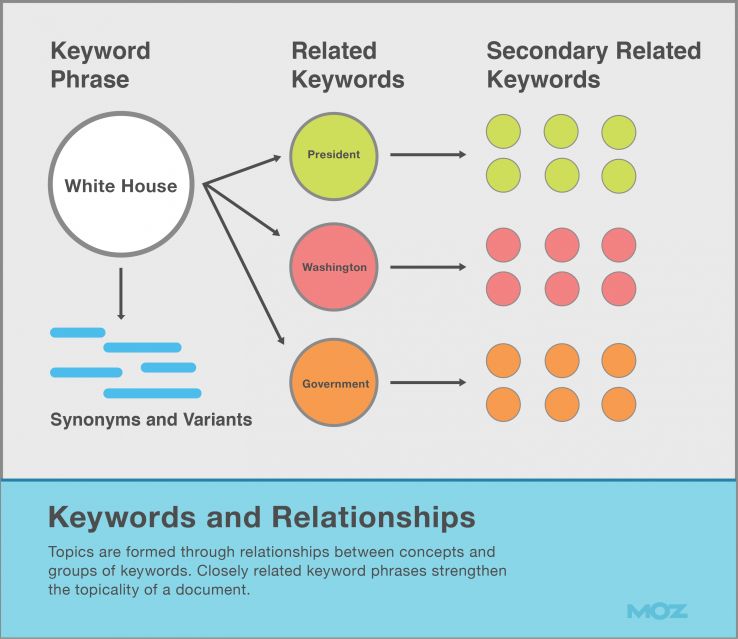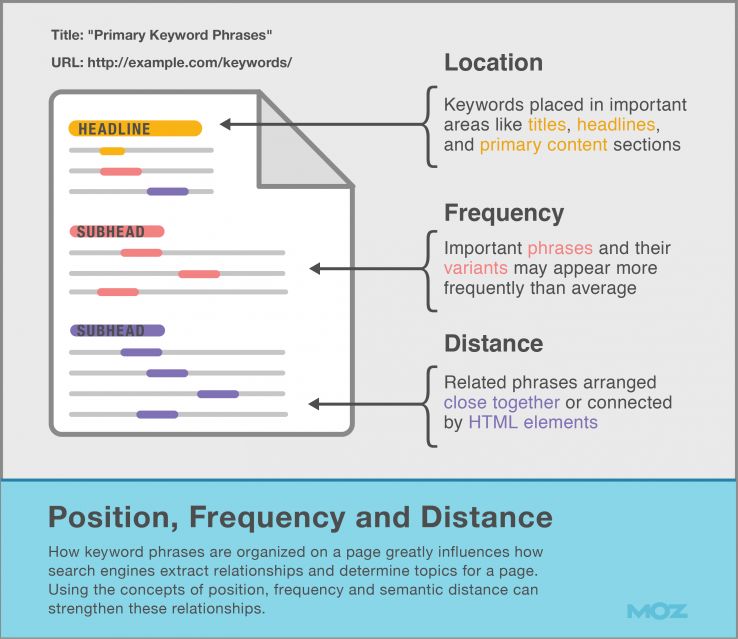Getting higher rankings, being more visible so that you incur clicks and hopefully, high-quality traffic to your website has long been a focus for many businesses. Why does on-page SEO matter? On-page SEO helps to get your website indexed by search engines and more importantly, makes it easier for your target customers to find you.
In a recent post written by Cyrus Shepard, he covers advanced techniques to on-page optimization that all SEOs as well as businesses should implement for optimal results. To begin, we’ve highlighted a few of the tips in this blog post:
1. Keywords and relationships
No matter what topic modeling technique you choose, all rely on discovering relationships between words and phrases. As content creators, how we organize words on a page greatly influences how search engines determine the on-page topics.
When we use keywords phrases, search engines hunt for other phrases and concepts that relate to one another. So our first job is to expand our keywords research to incorporate these related phrases and concepts. Contextually rich content includes:
- Close variants and synonyms: Includes abbreviations, plurals, and phrases that mean the same thing.
- Primary related keywords: Words and phrases that relate to the main keyword phrase.
- Secondary related keywords: Words and phrases that relate to the primary related keywords.
- Entity relationships: Concept that describe the properties and relationships between people, places, and things.

A good keyword phrase or entity is one that predicts the presence of other phrases and entities on the page. For example, a page about “The White House” predicts other phrases like “president,” “Washington,” and “Secret Service.” Incorporating these related phrases may help strengthen the topicality of “White House.”
2. Position, frequency, and distance
How a page is organized can greatly influence how concepts relate to each other.
Once search engines find your keywords on a page, they need to determine which ones are most important, and which ones actually have the strongest relationships to one another.
Three primary techniques for communicating this include:
- Position: Keywords placed in important areas like titles, headlines, and higher up in the main body text may carry the most weight.
- Frequency: Using techniques like TF-IDF, search engines determine important phrases by calculating how often they appear in a document compared to a normal distribution.
- Distance: Words and phrases that relate to each other are often found close together, or grouped by HTML elements. This means leveraging semantic distance to place related concepts close to one another using paragraphs, lists, and content sectioning.
A great way to organize your on-page content is to employ your primary and secondary related keywords in support of your focus keyword. Each primary related phrase becomes its own subsection, with the secondary related phrases supporting the primary, as illustrated here.

As an example, the primary keyword phrase of this page is ‘On-page Topic Targeting‘. Supporting topics include: keywords and relationships, on-page optimization, links, entities, and keyword tools. Each related phrase supports the primary topic, and each becomes its own subsection.
Original source: Moz
